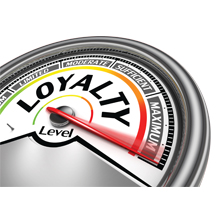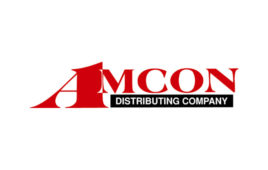 Using an industry-leading loyalty solution, operators across a host of retail channels can drive new business, gather crucial customer data and increase overall ticket sales.
Using an industry-leading loyalty solution, operators across a host of retail channels can drive new business, gather crucial customer data and increase overall ticket sales.
By John Lofstock, Editor
Loyalty programs are everywhere in the retail industry. Customers encounter them multiple times almost every day—whether shopping at a grocery store, buying a cup of coffee or purchasing a new DVD.
Retailers have many questions when it comes to implementing a loyalty solution. Do loyalty programs really work? Can a loyalty program change how people behave and entice them to spend more money? Can loyalty programs reduce the likelihood that customers will shop at one of your competitors?
While retailers have lagged other industries in terms of implementing customer relationship management (CRM) systems and strategies, loyalty is a hot area. An Oracle loyalty study found that retailers that can develop and sustain distinctive loyalty programs that change customer behavior will create a true competitive advantage.
Leading retail technology companies are developing these loyalty programs with the needs of retailers top of mind. Innovative solutions and unique approaches to loyalty have proven to:
• decrease price competition;
• build trust and positive customer relationships;
• decrease marketing costs;
• strengthen the brand;
• increase the share of wallet;
• increase sales; and
• decrease customer defection.
There is a clear need for loyalty programs in the retail industry. However, rather than simply mimicking current programs, which will only lead to a competitive stalemate and increased costs all around, retailers—both those planning to introduce a loyalty program for the first time and those wanting to tune up their existing program—should design loyalty program offerings to yield true competitive advantage.
This is one area of specialty for KickBack Points, a loyalty program founded by Oasis Stop ‘N Go, a 13-store chain based in Twin Falls, Idaho.
“At its base level, the loyalty program is a way for retailers to understand their customers beyond a cash transaction,” said Pat Lewis, partner, Oasis Stop ‘N Go and CEO of KickBack.
This is exactly what Phillips 66, one of the leading fuel retailers in the U.S., was looking for when it partnered with KickBack in 2011. Phillips 66 marketers are now driving repeat business and cultivating loyal customers through participation in the KickBack Rewards program. The company recognized that loyalty programs are increasingly influencing where consumers purchase fuel, how much they spend and which brands they purchase. To assist Phillips 66, 76 and Conoco-branded retailers in their efforts to drive sales and grow customer visits, Phillips 66 selected KickBack Points to strengthen brand loyalty across its network.
“We are excited about trying new things to better respond to changing consumer expectations,” said Jack Whalen, brand value manager for Phillips 66 Marketing. “We are building an innovative culture that we believe will allow us to continue to bring powerful new offerings to the market.”
KickBack is currently deployed in more than 1,000 Phillips 66, 76 and Conoco-branded sites with hundreds more scheduled to come on line in the first quarter of 2015.
Gleaning Customer Insights
When selecting a loyalty partner, retailers should look for programs that allow them to collect and analyze sales data, which can yield analytics and metrics to provide a better understanding of customer shopping habits.
New research from Loyalty 360, a loyalty marketer’s association, indicates that when brands don’t connect customer data with marketing efforts, the results are “inconsistent engagement that leads to lost opportunities, diminished results, eroded margins and fleeting brand value…engendering a loyalty divide.”
Consumers demand better, authentic connections based on value, and brands must deliver. Savvy marketers blend data from multiple sources to provide customer engagement that is authentic, relevant and consistent to the brand, nurturing comfort, familiarity, safety and trust, thus increasing loyalty with customers.
Before partnering with KickBack, the Phillips team began examining these options very closely to ensure it was choosing the partner that offered the greatest chance at impacting positive long-term results.
Using KickBack’s analytics, Phillips 66, 76 and Conoco-branded retailers are gaining operational advantages, such as learning when their customers shop and what they are most likely to buy.
Loyalty Solutions
Retailers don’t have to have the scale of Phillips 66 to enjoy loyalty benefits. Loyalty solutions are good for retailers of all sizes across a broad spectrum of retail operations, from convenience stores and gas stations to supermarkets, casinos and home improvement chains.
For example, Uncle Neal’s, a family-owned and -operated convenience store chain in Hastings, Neb., launched a comprehensive customer loyalty program that offers customers ways to save money, earn points and get rewarded for purchases both in-store and at the fuel pumps.
Customers can join Uncle Neal’s Rewards, which launched chainwide at the company’s 10 convenience stores in south central Nebraska, for free. Once customers join the program and register their Uncle Neal’s loyalty card, they will start earning reward points on their very next purchase.
In addition to increasing sales and strengthening customer relationships, Uncle Neal’s is using its loyalty program to capture a treasure trove of analytical data that will help the chain attract new business and satisfy its existing customer base.
Uncle Neal’s was founded by Hoff’s uncles, Neal Hoff and Craig Hoff, and his father, Jerry Hoff. The chain has a Piccadilly Pizza in three locations and fuel brands include CENEX at eight locations and Phillips 66 at two other stores.
“We have a very loyal base of customers and we are excited to be able to give them an opportunity to earn rewards and discounts on everything from foodservice to fuel,” said Justin Hoff, a supervisor for the family-owned business. “For the customers that we haven’t been able to pull in off the street, we are looking to give them a strong value proposition to try and stay loyal to the Uncle Neal’s brand.”
Building A Loyalty Community Online
For loyalty programs to succeed in the future, retailers will need to tie into consumers’ online habits, according to Nielsen Media’s “State of the Media: The Social Media Report.” That’s because consumers are spending free time, not only connected to the Internet, but staying connected via a mobile device.
The report found:
* Consumers spend 20% of their total time online on personal computers, and 30% of their total time online via mobile.
* Facebook remains the most-visited social network in the U.S. Users access Facebook via personal computers (152.2 million
visitors), mobile apps (78.4 million) and mobile Web (74.3 million).
* Facebook and Twitter are two of the most popular social networks, but Pinterest is one of the “breakout stars” for 2012 in social media, with the most year-over-year increase in unique audience and time spent on any social network across personal computers, and mobile Web and apps.
The data shows that customers aren’t only technologically savvy, but crave programs that plug into their lifestyle and that reward their loyalty.




